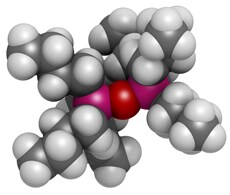Search
Elemental Speciation Analysis

Is environmental speciation on the horizon?
Speciation is used to identify and quantify different chemical forms of a particular element (also referred to as species) in a solution or matrix. Typically, environmental metal determinations generally measure the total element concentration, rather than different species, due to the following reasons:
- Lack of environmental regulatory rules for metal speciation
- Metal speciation is harder to establish than determination of total metals, which are often required for regulations
However, for certain elements, regulatory agencies already establish maximum contaminant levels (MCL) for certain species of an element, such as chromium (VI) and bromate. Because there are approved analytical methods for these species, there is no need for speciation analysis to distinguish from other species for regulatory compliance. Nevertheless, some environmental laboratories, such as the state-level labs, are interested in elemental speciation studies. It is believed that these studies can help understand what species contribute to the toxicity from a particular element (for instance, arsenic) and thereby help improve risk assessment.
With the advance of analytical instrumentation, availability of reference materials, and increased expertise of the analysts, speciation analysis has become more and more routine and more economical. In addition, although there are only a few regulatory methods for speciation, such as US EPA Method 321.8 , standardization methods are under development for speciation analysis. Furthermore, speciation legislation is emerging. One of the examples is regulation of organotin and mercury compounds in amendments to the EU Water Framework Directive.
On this page, you will find:
Tools for elemental speciation

Different hyphenation tools can be used for environmental speciation. Here we focus on only IC-ICP-MS and GC-ICP-MS. Coupling IC with ICP-MS allows separation of different ionic species of an element by ion chromatography and quantification by ICP-MS. Examples using IC-ICP-MS include chromium speciation and arsenic speciation . Generally, due to the ionic nature of most interesting species, ion chromatography is the separation method of choice. Another added benefit of IC in comparison to HPLC for metal elemental speciation is that IC uses PEEK materials, which are free from potential trace metal contamination.
The challenge, however, for hyphenated techniques lies in the connection of the two instruments and seamless operation of the two instruments to achieve accurate results. With modern Reagent-Free Ion Chromatography (RFIC™) systems, the effluent flowing from IC to ICP-MS is water, compatible with ICP-MS for sample loading. It is critical to use integrated software to run both instruments for an easier user experience.
GC-ICP-MS is used for speciation of volatile species, such as organotin compounds and alkylated derivatives of mercury. GC can be coupled with single quadrupole ICP-MS or sector field ICP-MS to achieve low detection limits. However, in order to physically couple both techniques a specially designed transfer line is required in order to transfer separated compounds to the ICP-MS at elevated temperatures in order to not sacrifice chromatographic separation.
Chromium speciation of drinking water samples

As a heavy metal regulated by the US EPA and the EU, chromium has multiple chemical forms or species. In drinking water, chromium exists only as chromium (III) and chromium (VI). Because chromium (III) is beneficial and essential to health whereas chromium (VI) is carcinogenic, it is important to distinguish between these two forms. Although the State of California is currently the only state in the US that regulates chromium (VI), there continues to be greater health concerns with respect to this species. Outside the United States, China and Japan are also regulating the amount of chromium (VI) in drinking waters.
The speciation analysis of chromium is challenging because chromium (III) and chromium (VI) can be easily interconverted based on sample collection and treatment conditions. For example, low pH in water may cause degradation of chromium (VI) to chromium (III) due to the increased redox potential, while high water pH leads to chromium (III) precipitation. In addition, accurate speciation analysis of chromium can be hampered by polyatomic interferences for its most abundant isotope 52Cr.
For information on chromium speciation of drinking water samples
Arsenic speciation in drinking water

Arsenic can be present as a variety of species in water. Organic forms of arsenic, such as Arsenobetaine, are generally treated as non-toxic, whereas inorganic arsenic, such as arsenic (III) and arsenic (V), is much more toxic than organic arsenic. Therefore, it is important to distinguish the organic forms from inorganic forms to accurately assess the toxicity risk.
Arsenic speciation involves separation of inorganic species from organic species by ion chromatography first and subsequent quantification of the corresponding concentration of each of the different species by ICP-MS. Since it is more important to know the total amount of inorganic forms, it is widely accepted to convert the arsenic (III) to arsenic (V) before analysis. The main reason for doing so is that depending on the number of organic forms of As present in a sample, it may be challenging to completely separate them, especially arsenic (III).
Bromine speciation in drinking water

Bromine has different species, including bromide and bromate. Bromate is a byproduct produced during drinking water disinfection by ozonation. As a potential carcinogen, bromate is regulated by the U.S. EPA, EU, and many other countries.
EPA Method 321.8 is one of the few regulatory methods approved for bromine speciation for detection of bromate using IC-ICP-MS. The method leverages both the high resolving power of IC, and the detection power of ICP-MS thus providing easy and fast detection of bromate in drinking water.
For information on how EPA 321.8 is performed using IC-ICP-MS
Vanadium speciation in water

Vanadium is a metal currently not regulated by the US EPA. This metal element was placed on the Unregulated Contaminant Monitoring Rule 3 (UCMR 3) for monitoring by the public water systems during 2013 and 2015. However, no regulatory determinations were made on vanadium and vanadium species after the UCMR3 study.
Vanadium has two main chemical forms, vanadium (IV) and vanadium (V). It is important to separate both forms of the vanadium since they have different toxicity in water.
Mercury and tin speciation using GC-ICP-MS

Tin is a trace element required for bone formation. Tin exists in both inorganic and organic form. Inorganic tin after inhalation or ingestion has low toxicity. Some of the organotin compounds are toxic to liver, skin, and nerve systems. Mercury has three forms: elementary mercury, inorganic salt of mercury, and organic mercury. The most toxic mercury species is methylmercury, which can be absorbed into blood stream causing neurologic damage.
Different mercury and tin species are regulated by the recent amendments to the EU Water framework Directive. It is critical to demonstrate that the regulatory species are accurately measured and reported. GC-ICP-MS has been successfully used for mercury and tin speciation with low detection limits that are required by the regulations.
For information on mercury and tin speciation using GC-ICP-MS
环境学资源库
您可以获取有针对性的科学应用笔记、案例研究、视频、网络研讨会和白皮书,用于空气质量、污染物和水质分析。
